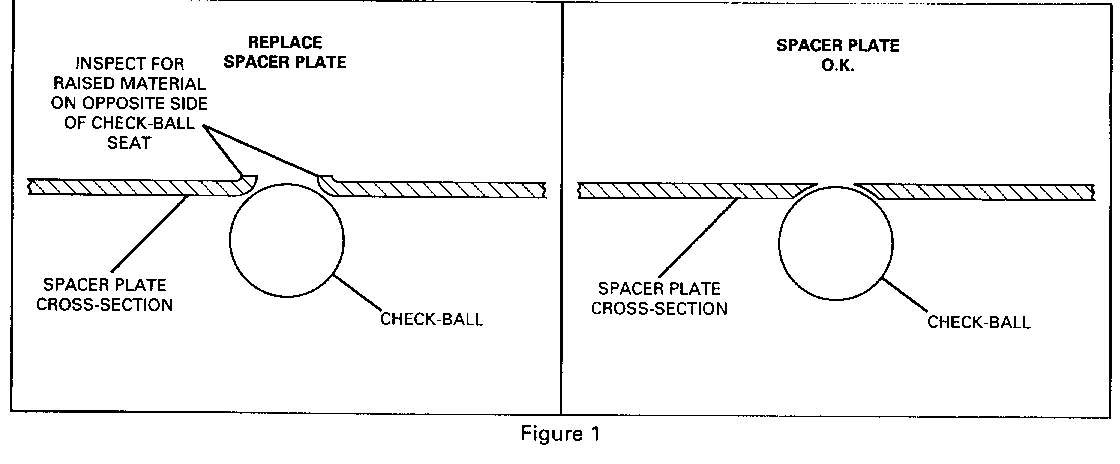SERVICE GUILD: EVALUATING PEENED SPACER PLATE

SUBJECT: EVALUATING PEENED SPACER PLATES ON ALL CADILLACS WITH HYDRA-MATIC AUTOMATIC TRANSMISSIONS AND TRANSAXLES
During transmission/transaxle repairs which involve valve body removal, one of the decisions that must be made is whether or not the valve body spacer plate should be replaced due to checkball peening. This is a common situation on high mileage vehicles. Some spacer plate peening is considered acceptable and is actually preferred due to improved checkball seating. Excessive spacer plate peening can eventually lead to a nonfunctional checkball which could cause transmission/ transaxle performance problems. This bulletin will help you decide if a spacer plate needs to be replaced due to peening.
The following two procedures can help determine if the spacer plate can be reused. The following should be performed at all checkball locations after the spacer plate has been removed from the transmission/transaxle. Refer to the HYDRA-MATIC AUTOMATIC TRANSMISSION/ TRANSAXLE DIAGNOSIS and/or UNIT REPAIR Sections of the appropriate Service Information Manual for R&R procedures, checkball locations, and functions.
1. The spacer plate should be inspected for raised material ON THE OPPOSITE SIDE OF THE CHECKBALL SEAT. Refer to Figure 1.
o If the material on the opposite side is raised, the peening is too severe and the spacer plate must be replaced.
o If the material on the opposite side is flat, the spacer plate DOES NOT need to be replaced (even if material is raised around the same side as the checkball seat).
2. To verify that the spacer plate is peening evenly and the checkball is sealing correctly, seat the checkball on the spacer plate. Shine a light on the opposite side of the spacer plate and look for light around the edge of the checkball. Refer to Figure 2. No trace of light should be present. If light can be seen, the checkball is not seating properly and the spacer plate should be replaced.


General Motors bulletins are intended for use by professional technicians, not a "do-it-yourselfer". They are written to inform those technicians of conditions that may occur on some vehicles, or to provide information that could assist in the proper service of a vehicle. Properly trained technicians have the equipment, tools, safety instructions and know-how to do a job properly and safely. If a condition is described, do not assume that the bulletin applies to your vehicle, or that your vehicle will have that condition. See a General Motors dealer servicing your brand of General Motors vehicle for information on whether your vehicle may benefit from the information.
